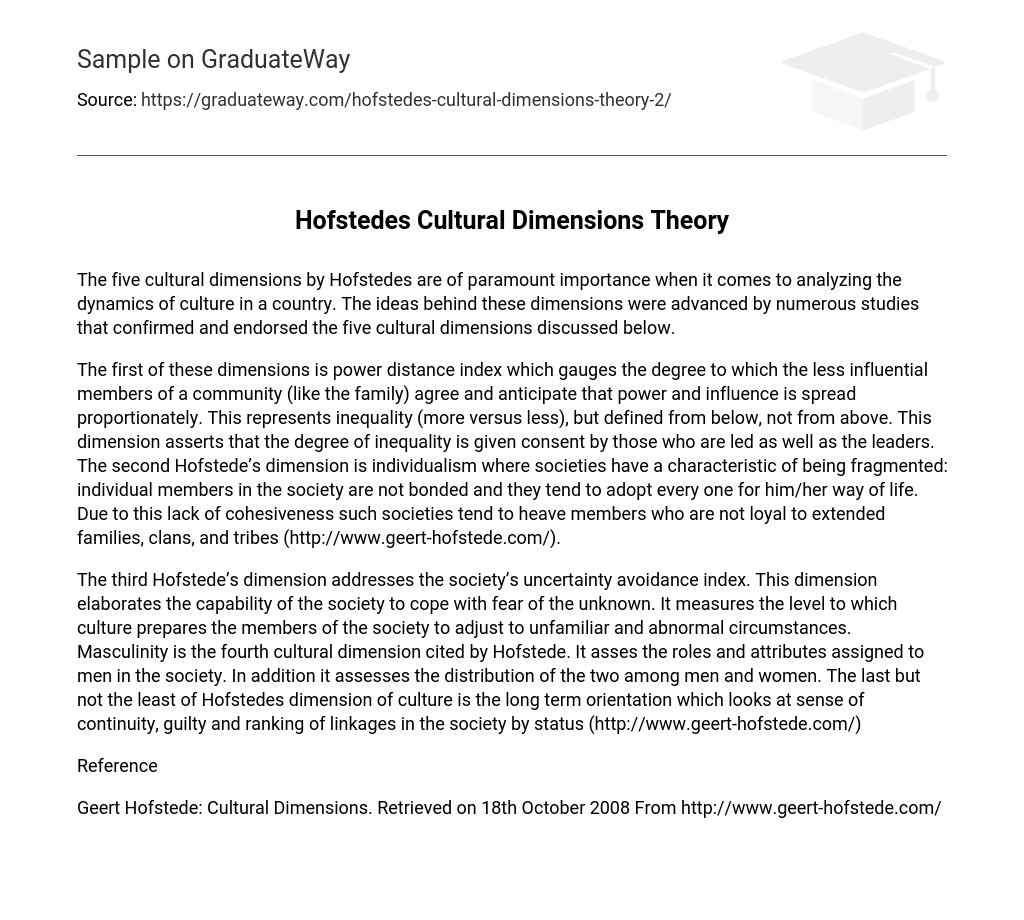The five cultural dimensions by Hofstedes are of paramount importance when it comes to analyzing the dynamics of culture in a country. The ideas behind these dimensions were advanced by numerous studies that confirmed and endorsed the five cultural dimensions discussed below.
The first of these dimensions is power distance index which gauges the degree to which the less influential members of a community (like the family) agree and anticipate that power and influence is spread proportionately. This represents inequality (more versus less), but defined from below, not from above. This dimension asserts that the degree of inequality is given consent by those who are led as well as the leaders. The second Hofstede’s dimension is individualism where societies have a characteristic of being fragmented: individual members in the society are not bonded and they tend to adopt every one for him/her way of life. Due to this lack of cohesiveness such societies tend to heave members who are not loyal to extended families, clans, and tribes (http://www.geert-hofstede.com/).
The third Hofstede’s dimension addresses the society’s uncertainty avoidance index. This dimension elaborates the capability of the society to cope with fear of the unknown. It measures the level to which culture prepares the members of the society to adjust to unfamiliar and abnormal circumstances. Masculinity is the fourth cultural dimension cited by Hofstede. It asses the roles and attributes assigned to men in the society. In addition it assesses the distribution of the two among men and women. The last but not the least of Hofstedes dimension of culture is the long term orientation which looks at sense of continuity, guilty and ranking of linkages in the society by status (http://www.geert-hofstede.com/)
Reference
Geert Hofstede: Cultural Dimensions. Retrieved on 18th October 2008 From http://www.geert-hofstede.com/





